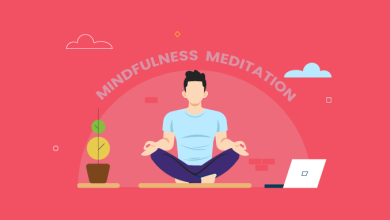When Should I See a Doctor for Back Pain?

Back pain is a common condition that affects millions of people worldwide. While many cases of back pain resolve on their own with rest, stretching, and home care, there are instances when medical attention is necessary. Ignoring persistent or severe back pain can lead to complications, affecting daily activities and overall quality of life. But how do you know when it’s time to see a doctor? Let’s explore the warning signs and treatment options available.
Common Causes of Back Pain
Back pain can stem from various sources, including:
- Muscle Strain: Overuse, heavy lifting, or sudden movements can strain back muscles and ligaments.
- Herniated Discs: When spinal discs bulge or rupture, they can press on nerves, causing pain and discomfort.
- Arthritis: Conditions like osteoarthritis can lead to inflammation and stiffness in the spine.
- Sciatica: Compression of the sciatic nerve can result in sharp pain that radiates down the leg.
- Poor Posture: Sitting or standing improperly for extended periods can strain the spine and surrounding muscles.
When Should You See a Doctor?
While minor back pain often improves with rest, certain symptoms indicate a more serious underlying condition that requires medical evaluation. Here are key signs that you should seek medical attention:
1. Persistent Pain Lasting More Than Two Weeks
If your back pain does not improve with home treatments such as stretching, ice/heat therapy, or over-the-counter pain relievers, it’s time to consult a doctor. Chronic pain lasting more than two weeks could indicate an underlying issue that needs professional diagnosis and treatment.
2. Severe or Worsening Pain
If your pain intensifies over time or becomes unbearable, it may indicate a more serious problem, such as a spinal disorder or nerve compression. Severe pain that disrupts daily activities or sleep should not be ignored.
3. Pain Radiating Down the Legs or Arms
Pain that moves down the legs, hips, or arms, especially if accompanied by numbness, tingling, or weakness, could be a sign of nerve impingement or sciatica. This condition requires professional assessment to prevent further nerve damage.
4. Weakness, Numbness, or Tingling
Experiencing numbness, tingling, or weakness in the lower back, legs, or feet may signal nerve damage. Conditions like herniated discs or spinal stenosis can put pressure on nerves, leading to potential long-term complications.
5. Unexplained Weight Loss Accompanied by Back Pain
If you experience sudden, unexplained weight loss along with persistent back pain, it could be a sign of an infection, tumor, or serious medical condition. Seeking immediate medical evaluation is crucial.
6. Loss of Bladder or Bowel Control
In rare but serious cases, back pain accompanied by loss of bladder or bowel control may indicate cauda equina syndrome, a medical emergency that requires urgent treatment to prevent permanent damage.
7. Back Pain Following an Accident or Injury
If your back pain started after a fall, car accident, or sports injury, it’s essential to see a doctor. Even if the pain seems minor, injuries like fractures or internal damage can worsen over time.
8. Pain Accompanied by Fever or Infection Symptoms
A high fever, chills, or redness around the spine may indicate a spinal infection. If these symptoms accompany your back pain, seek immediate medical attention.
Treatment Options for Back Pain
Depending on the cause of your back pain, various treatment options are available, ranging from conservative approaches to more advanced medical interventions.
1. Chiropractic Care
Chiropractic adjustments can realign the spine, reduce pressure on nerves, and relieve pain. Many patients find relief through non-invasive treatments offered by Dr. Palmes, a trusted chiropractic provider specializing in back pain management.
2. Physical Therapy
Physical therapy focuses on exercises that strengthen muscles, improve posture, and increase flexibility, reducing back pain and preventing future injuries.
3. Medications
- Over-the-counter pain relievers (such as ibuprofen and acetaminophen) help reduce inflammation.
- Muscle relaxants may be prescribed for severe muscle spasms.
- Steroid injections can reduce inflammation in cases of nerve compression.
4. Lifestyle Modifications
- Ergonomic adjustments at work and home help prevent strain on the spine.
- Weight management reduces pressure on the lower back.
- Regular exercise and stretching keep the spine flexible and strong.
5. Surgical Intervention (In Severe Cases)
Surgery is generally a last resort for back pain but may be necessary for herniated discs, spinal stenosis, or severe degenerative conditions.
How to Prevent Back Pain
To maintain a healthy spine and reduce the risk of chronic back pain:
- Maintain good posture while sitting and standing.
- Lift heavy objects properly by bending the knees, not the back.
- Engage in low-impact exercises like swimming or yoga to strengthen back muscles.
- Use a supportive mattress and ergonomic chair to maintain spinal alignment.
- Avoid prolonged sitting and take frequent breaks to stretch and move.
For expert chiropractic care and personalized back pain treatment, Dr. Palmes offers comprehensive solutions tailored to your needs.



